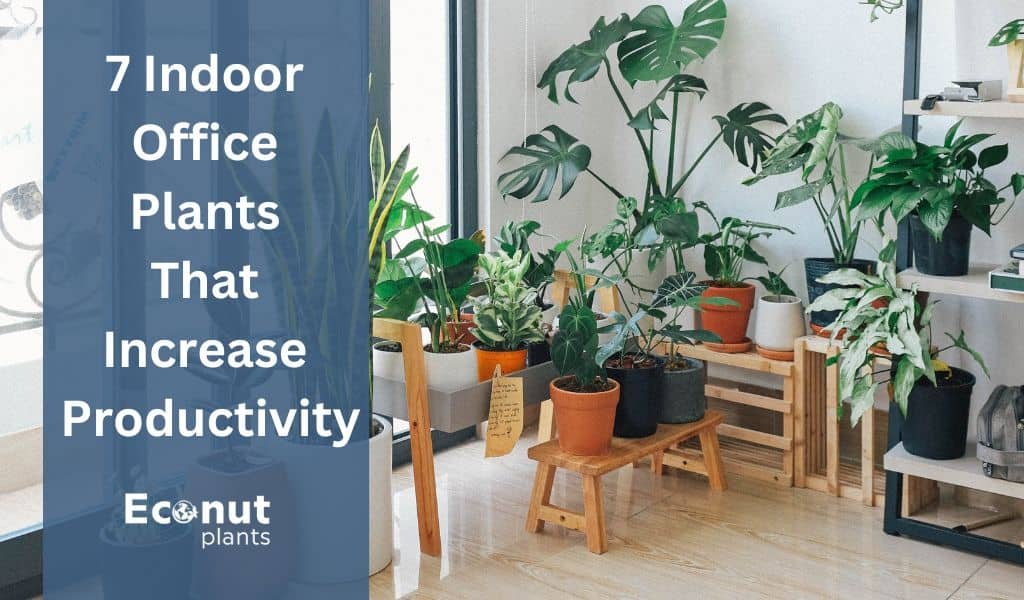Some Indoor office Plants for the Greenery in the office or work environment is not only aesthetically pleasant, but it may boost productivity! There are several reasons why you should have office plants on your desk, ranging from health to air cleaning.
The orkplace plants should be low-light plants that can live without direct sunlight. However, certain really gloomy workplaces necessitate the use of highly specific indoor plants. That means you won’t have to worry about caring for low-maintenance plants during busy seasons.
That’s why the finest and best office plants, including several best plants for office desks that are small enough to squeeze in, a couple that help clean the air while you work, and several that will make a dramatic impression in bigger areas.
Top 10 Indoor Office Plants That Increase Productivity
The Plants put at desks aid to increase attention and reduce stress. Several recent studies suggest an increase in productivity when plants are placed near work places. Plants also help to clean VOC. Plants are professionally grown in scientific and light weight potting mediums such as coco peat, moss, and others, and are planted in eco-friendly planters that contribute to a healthy work environment.
Working amid greenery enhances worker productivity and energy levels, according to study. As a result, people prefer to work in a relaxed setting. They will be more engaged in working if they are not afraid. The following plants enhance’ working ability and their mental capacity.
1. Peace Lily
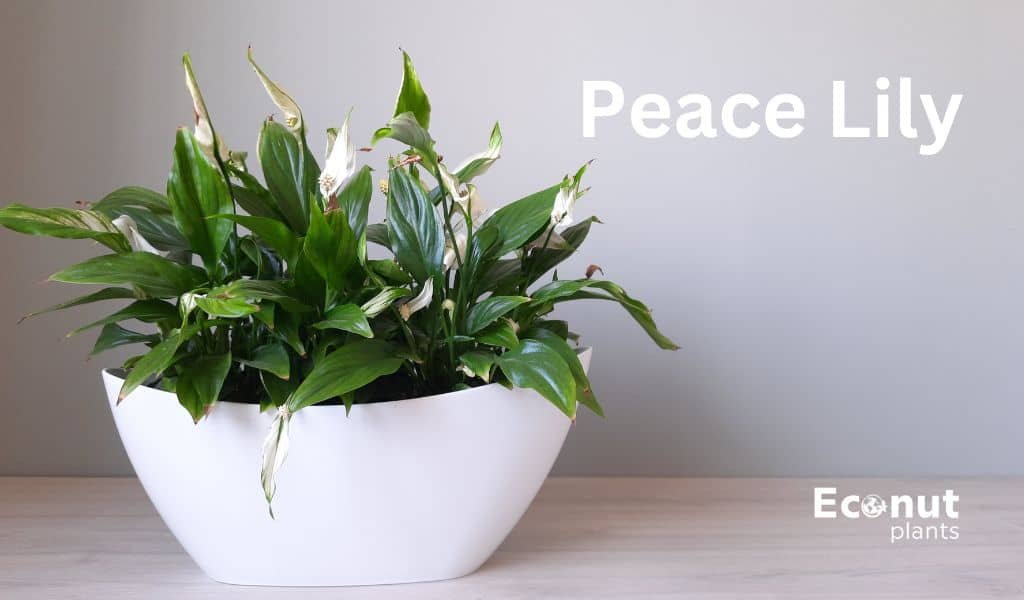
Botanical name: Spathiphyllum
Spathiphyllum is the most popular indoor plants, with over 40 varieties being farmed on a large scale. It is a low-maintenance plant that thrives in low-light conditions. It was discovered to be the most successful plant in NASA’s clean air research for removing benzene, formaldehyde, trichloroethylene, carbon monoxide, xylene, toluene, ammonia, and other pollutants from the air.
Peace lilies are often cultivated as potted houseplants because most climates do not allow for outdoor cultivation. If you have peace lilies in pots, you may transfer them outside throughout the summer. However, if temperatures drop, it’s a good idea to bring them indoors. Indoors, caring for a peace lily is simple. Give your plant fairly wet soil, filtered sunshine, and steady, temperate conditions.
Know more: Peace Lily: Guide For Planting, Watering, Fertilizing And Pruning
2. Bonsai

Bonsai is a Japanese loanword used as a verb to denote the practice of growing miniature trees by trimming and training. The Bonsai plant is a combination of two words: bon, meaning container or dish, and sai, meaning tree.
These Bonsai plants can last for more than a century if properly cultivated. They need less sunlight. Once a week, they need water. They also need fertilizer to grow faster and with more nutrients. It takes at least ten years to mature.
You can also grow this plant with homemade compost, such as kitchen waste. Animal manure can also be used as a good fertilizer. For example, it boosts the creativity, focus level, and skill level of workers. Additionally, it is beneficial for employees to work in pairs.
Know more: 6 Magnificent Bonsai Fruit Plants That Can Beautify Your Home
3. Cast Iron Plant

Botanical name: Aspidistra elatior
The cast-iron plant has a reputation for being a hard-to-kill houseplant as well as a stunning outdoor foliage plant in its growth zones. This plant can withstand a great deal of neglect and growth circumstances that would kill many other plants, such as low light levels. It has arching, lance-shaped, deep green, glossy leaves up to 2 feet long and 4 inches broad.
When cultivated outside, it occasionally produces small cream and purple flowers around the base of the plant, but the blossoms seldom emerge when grown indoors. The cast-iron plant grows slowly, and spring is often the ideal time to plant it.
4. Pothos
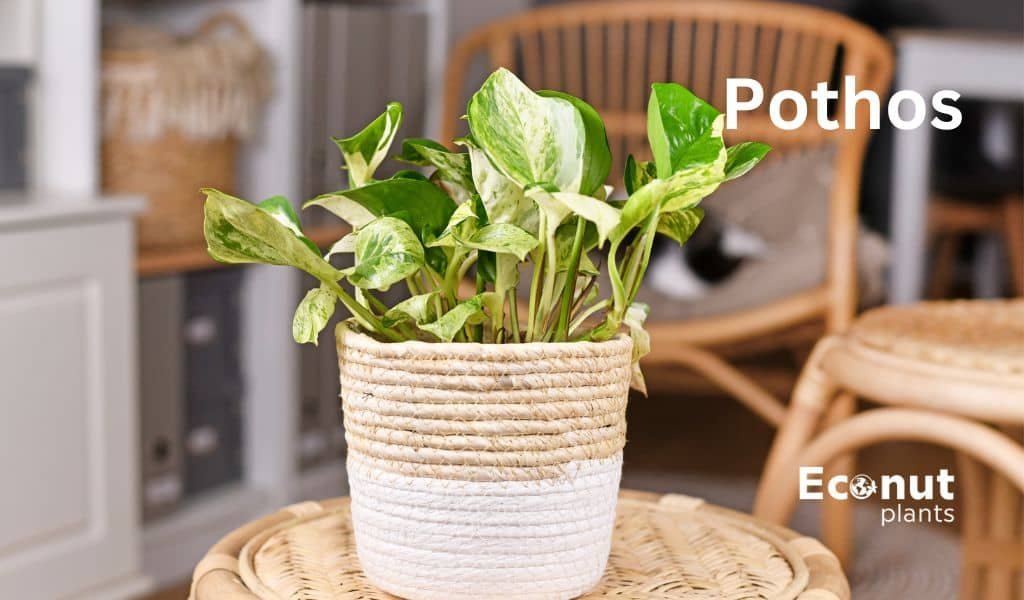
Botanical Name: Epipremnum aureum
Despite the absence of blossoms, Pothos tropical vine, similar to the philodendron, comes in a variety of leaf colors and patterns that appeal to a wide range of preferences and decors. Pothos is tolerant of neglect, almost pest- and disease-free, and a fantastic low-light indoor plant suited for darkened rooms and workplaces, making it nearly failsafe even for novices.
The aerial roots that stick to surfaces trail or ascend the long stems, making this a versatile choice for hanging, and baskets, plant stands bookshelves. The pothos is one of the best houseplants for boosting indoor air quality and cleaning up your home or workplace.
Know more: Pothos Plant Types In 9 Easy Steps
5. Bamboo
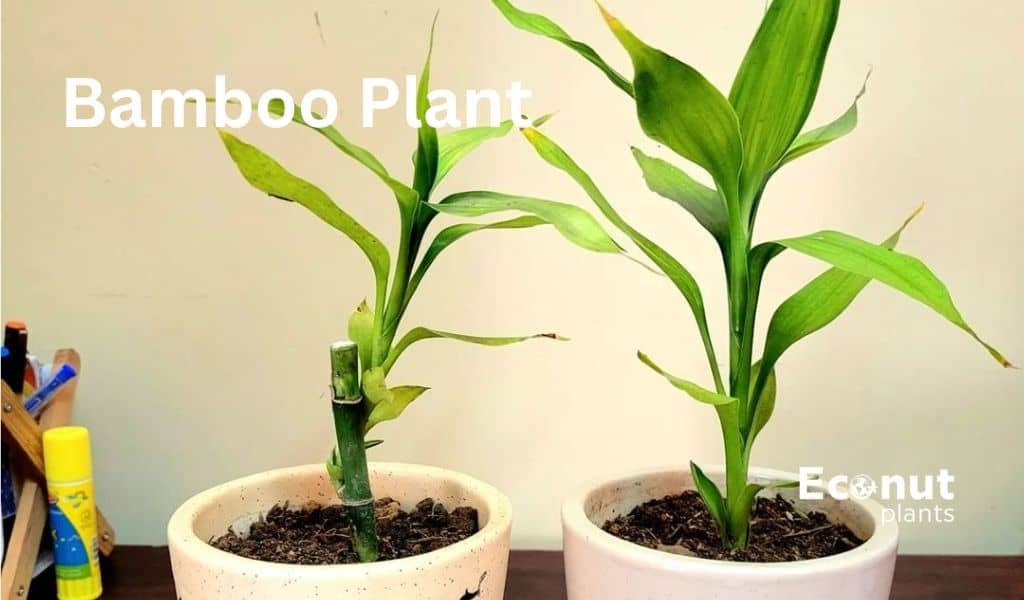
Botanical Name: Dracaena braunii
Bamboo, like the rest of the Dracaenas, is a pleasant indoor plant. This plant is popular among many people since it thrives in water and comes in a variety of forms and sizes. When shopping for desk plants, consider a bamboo arrangement for a one-of-a-kind burst of green.
The plant is also connected with good fortune in many cultures. As a result, it’s suitable for a professional setting. This design is completed with a wine bottle and black valley stones. Planters made of pebbles will grow if properly potted and have appropriate drainage.
Bamboo plants come in a variety of sizes. The little ones are ideal for use as desk plants. However, if you have a bigger communal space, the larger bamboo trees are great. Keep them away from air conditioning and heating devices, as well as from direct sunlight.
Know more: Lucky Bamboo Care – How To Grow Lucky Bamboo Plants Indoors
6. Snake Plant

Botanical name: Sansevieria
Sansevieria is one of the hardiest plants. Its popularity has grown in recent years due to its simplicity of maintenance and advantages in improving air quality. This plant was included in a NASA study on clean air and was shown to be successful.
It is an excellent indoor plant with succulent-like, fatty leaves that store water and allow it to thrive in deserts for extended periods of time. The Sansevieria plant can effectively eliminate nitrogen oxides and formaldehyde, which can be found in high concentrations throughout the office.
The snake plant is an excellent choice for beginning gardeners. It grows nicely in containers and on the floor. The snake plant grows well in warm weather and struggles in cold weather. This plant is drought-tolerant, although it is prone to overwatering, which causes root rot.
7. ZZ Plant
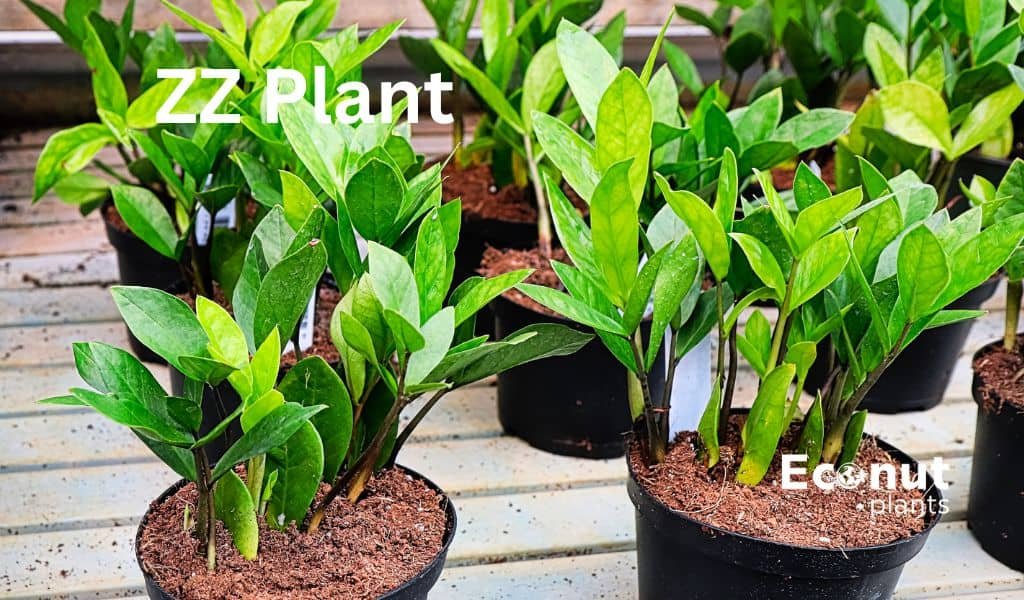
Botanical Name: Zamioculcas zamiifolia
The ZZ plant is both appealing and tough to damage, making it excellent for people who have never grown plants before. ZZs flourish in medium- to high-light environments, although they may also live in low light. They also don’t need as much water as cacti, so you won’t have to water them as often.
The ZZ’s sleek and glossy leaves range in color from dazzling lime as a juvenile to emerald green as an adult. Single leaflets can be one to three inches long. They sprout from broad, inflated stalks that sprout from massive, water-storing rhizomes that are buried deep in the soil.
If its leaves begin to fall off, give it a brief watering, and it will rapidly recover. This low-light indoor plant can thrive after weeks of neglect and still look wonderful. It’s an excellent choice for workplace plant décor.
8. Chinese Evergreen
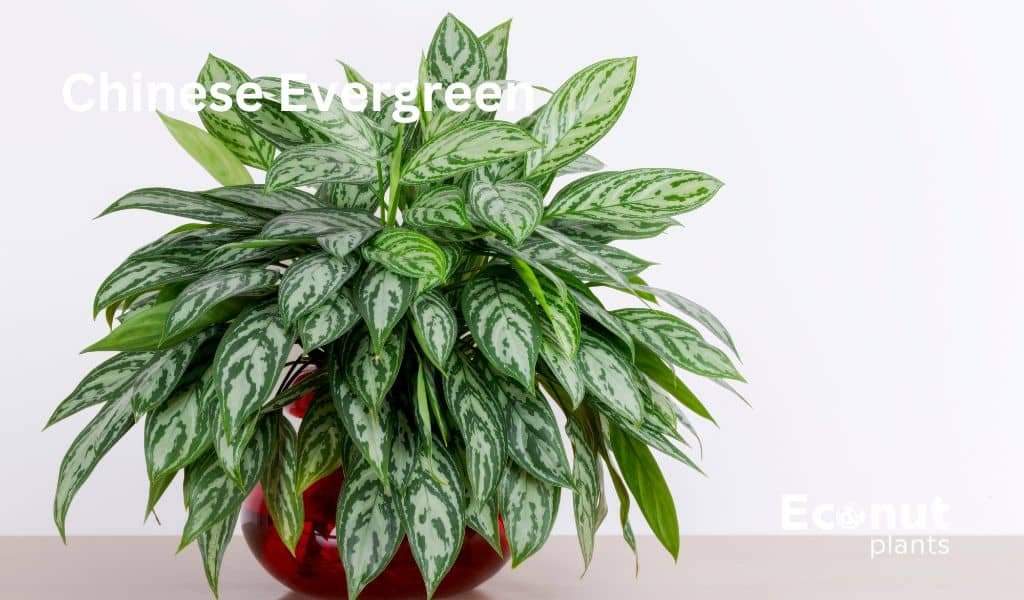
Botanical name: Agalonema
Aglaonema is the popular indoor plant that originates from the arum plant family, Araceae, and is native to tropical and subtropical climates in South Asia. It is commercially farmed on a large scale all over the world and has over 100 popular kinds that are all appealing and easy to care for.
It is a very low-demanding plant that can flourish in low light and temperatures ranging from 15 to 25 degrees Celsius. Aglaonema was discovered to purify the interior air and enhance humidity levels in a NASA study on clean air.
Know more: Why Chinese Evergreen Plants Are Great Idea: Top 8 Reasons
9. Spider Plant
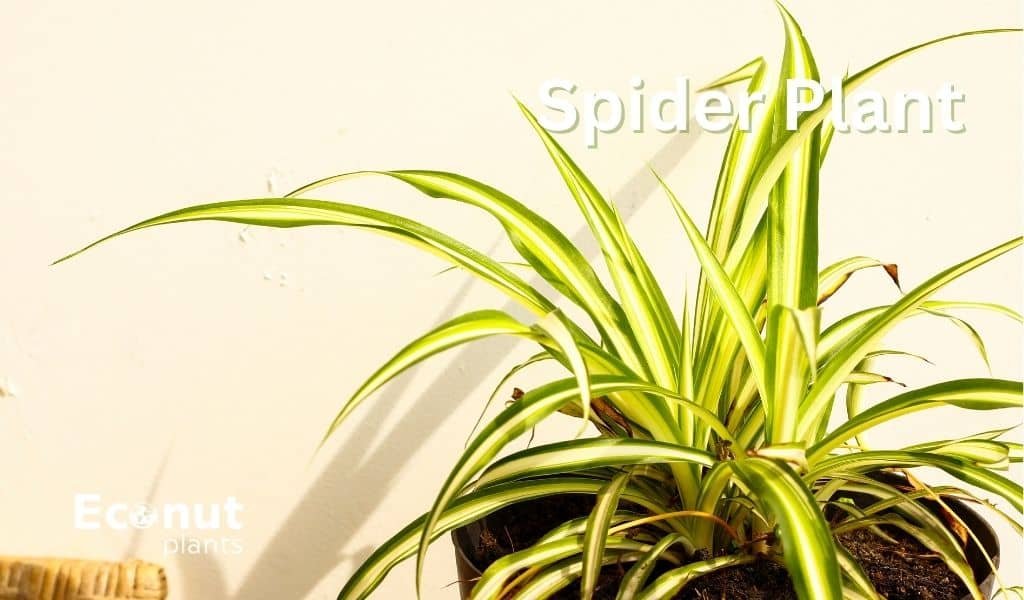
Botanical name: Chlorophytum comosum
Spider plants, despite their creepy-crawly moniker, are among the most popular houseplants to grow. These warm-weather perennials will withstand less-than-ideal circumstances when planted indoors, and they are magnificent if you can accurately simulate their natural tropical environment by giving those warm temperatures and humid air.
These plants produce rosettes of thin, softly arching leaves that can range in length from 12 to 18 inches. The leaves might be green or green and white striped. Mature plants bring forth long stalks with tiny, star-shaped blooms on a regular basis. A little fruit develops after the blossoms are fertilized. When the blooms fall off, small plantlets sprout in their place, eventually growing their own roots and allowing them to be plucked off to make new potted plants.
Know more: Beginner’s Guide To Growing And Caring Spider Plant
10. Rubber Plants
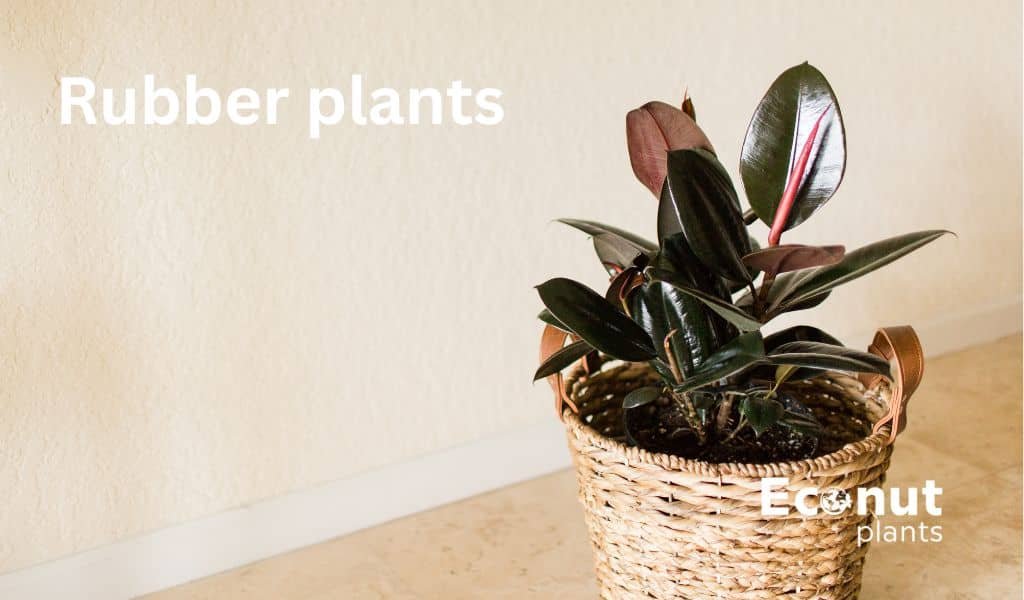
Botanical Name: Ficus elastica
Ficus elastica, popularly known as the rubber plant, is an unusual-looking variety endemic to Southeast Asia’s tropics. This long-living plant has enormous, oval-shaped leaves with a brilliant green tint and may grow swiftly, reaching heights of up to 100 feet in its native habitat. it is more commonly maintained as a houseplant inside, where it may be planted and cared for all year and its growth is kept more manageable.
When it comes to caring for a rubber plant, it is simple. It requires sufficient light, moisture, and temperature. Give it a southern or eastern exposure, but keep it at least a few feet away from the windows, and you’ll be rewarded with a unique addition to indoor plant collection.
If you are searching fresh and live houseplants online then checkout our extensive collection of amazing indoor and outdoor houseplants.
I hope you enjoyed reading the top 10 indoor office plants that increase productivity. If you think we have forgotten something or have a suggestion, please leave it in the comment section below.

